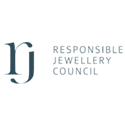The world of gold investment is ever-evolving, a domain where news unfolds rapidly, influencing markets and investment decisions. This past week has been particularly notable, presenting four major stories that hold significant implications for the gold market. Ranging from geopolitical tensions affecting gold prices to record-high demands and ethical mining controversies, these developments weave a complex tapestry of insights into the dynamics of gold investment. Let’s explore each of these stories in detail, understanding their potential impact on the market from the perspective of both casual enthusiasts and serious investors.
1. Gold Prices Surge Amid Geopolitical Tensions
In a world where economic trends and geopolitical events often intertwine, the recent surge in gold prices serves as a prime example. This significant increase, marking the highest gold prices in nearly three months, is a direct response to a complex global situation, where economic factors like a weakening dollar intersect with escalating geopolitical tensions, particularly in the Middle East.
The Impact of a Weakening Dollar
The dollar’s decline against other major currencies has played a pivotal role in this scenario. As the dollar weakens, gold becomes more accessible and affordable for international investors. This increased affordability boosts demand, as investors around the world turn to gold, seeking a stable store of value in an uncertain economic climate. The relationship between the dollar and gold is a classic inverse one; as the dollar falls, gold often rises.
Escalating Middle East Tensions and Gold’s Safe-Haven Appeal
The recent US airstrikes in Yemen against Houthi forces mark a significant escalation in Middle Eastern tensions. These airstrikes, part of a larger geopolitical struggle in the region, have raised concerns about the stability of the Middle East, an area already fraught with longstanding conflicts and political instability. Investors, wary of the potential for these conflicts to disrupt global markets, often look to gold as a protective hedge in such times.
Additionally, the growing apprehension about Israel’s military campaign and its potential spillover into Lebanon has further fueled these concerns. The possibility of a broader conflict in the region, involving multiple countries, adds to the uncertainty and instability. In scenarios like these, gold’s appeal as a safe-haven asset becomes increasingly pronounced. Investors and financial institutions alike gravitate towards gold, seeing it as a reliable safeguard against geopolitical risks and the accompanying market volatility.
Gold’s Role in a Turbulent Global Economy
In times of geopolitical upheaval, gold’s role as a safe-haven asset becomes particularly significant. Unlike other assets, gold is often perceived as a haven in times of crisis, largely due to its historical stability and intrinsic value. This perception is reinforced during periods of heightened geopolitical tension, as seen currently in the Middle East.
The combination of these factors – a weakening dollar, escalating tensions in the Middle East, and gold’s enduring status as a safe-haven asset – has culminated in the recent surge in gold prices. As investors continue to navigate through these tumultuous times, the allure of gold, with its promise of stability and security, seems only to grow stronger. This trend underscores the metal’s enduring appeal in a world marked by economic and geopolitical uncertainties.
2. Central Banks’ Influence on Gold Prices
The intricate interplay between the monetary policies of central banks and the allure of gold is a fascinating aspect of the global economy. In recent times, this relationship has become even more pronounced as major central banks, particularly the US Federal Reserve, engage in a delicate balancing act of interest rate adjustments.
Historically, interest rate hikes have typically diminished gold’s appeal. The logic behind this is relatively straightforward: as interest rates rise, so does the yield on interest-bearing assets like bonds and savings accounts. Investors, seeking the best returns for their money, often shift their focus away from non-yielding assets like gold. This dynamic is a fundamental aspect of investment strategy, reflecting the perennial search for assets that offer the best potential returns.
However, the current global economic landscape is complex and ever-changing. Amidst this backdrop, the policies of central banks are under intense scrutiny. As these institutions grapple with the challenges of managing inflation and stimulating economic growth, their decisions on interest rates have far-reaching implications. The recent trend of rate hikes by central banks was primarily aimed at combating inflation, a move that initially seemed to dampen the appeal of gold.
Yet, as the global economic scenario continues to evolve, there is growing speculation that central banks might pivot in their approach. Analysts and investors alike are closely watching for signs that these banks might pause their rate hikes, or perhaps even reverse course and lower rates. Such a policy shift could be driven by a variety of factors, including concerns about economic growth or unexpected global events.
The prospect of a pause or a reduction in interest rates could significantly alter the investment landscape. For gold, it could mean a resurgence in its appeal. Lower interest rates would reduce the opportunity cost of holding gold, potentially making it a more attractive investment compared to yield-bearing assets. This scenario highlights the nuanced relationship between monetary policy and gold investment. It reflects the delicate balance central banks must maintain as they navigate between managing inflation and supporting economic growth.
The current economic environment, marked by uncertainties due to various global issues, has made the task of central banks more challenging. As they navigate these complexities, their decisions will continue to have a significant impact on the gold market. Investors, therefore, must remain vigilant, understanding that the actions of central banks are key indicators that can sway the direction of gold prices.
3. Record-High Gold Demand in 2023
The year 2023 has been a landmark year for gold, with demand soaring to record highs. This unprecedented demand, as reported by the World Gold Council, has been fueled by a confluence of factors: the ongoing geopolitical strife in Ukraine, the pervasive shadow of global inflation, and a weakening dollar. These elements have collectively nudged investors towards safe-haven assets, with gold being a primary beneficiary.
Central banks have been key players in this scenario, actively adding to their gold reserves. Their actions underscore the enduring appeal of gold in times of economic uncertainty and reflect the heightened global apprehension about the future of the economy.
4. Ethical Mining and Indigenous Rights in Guyana
In the dense rainforests of Guyana, a significant yet underreported story is unfolding, one that could reshape the ethical landscape of the gold mining industry. The small Amerindian village of Isseneru is at the heart of a brewing conflict, standing firm against the interests of the Canadian mining giant, Aurora Gold Mines. This confrontation is not merely a local dispute; it represents a pivotal moment in the global conversation about the rights of indigenous peoples and the ethical responsibilities of the mining industry.
The Heart of the Matter: Isseneru’s Stand
Isseneru, a village home to around 200 people, is steeped in a way of life that has been passed down through generations. The villagers’ connection to their land is profound, rooted in cultural traditions, spiritual beliefs, and a symbiotic relationship with their environment. The proposed gold mine by Aurora Gold Mines threatens to disrupt this delicate balance, posing risks to the villagers’ way of life, their sacred sites, and the ecological integrity of their homeland.
The conflict raises critical questions about the right to self-determination for indigenous communities. It challenges the notion of development at the expense of cultural heritage and environmental sustainability. The villagers of Isseneru are not just fighting for their land; they are fighting for their identity, their history, and their future.
Ethical Mining: A Global Imperative
The situation in Isseneru casts a spotlight on the broader issues of ethical mining practices. The gold industry, with its vast economic influence, has often been criticized for prioritizing profits over people and the environment. The demand for gold, while providing economic benefits, has too often led to environmental degradation, social upheaval, and the marginalization of vulnerable communities.
This case in Guyana presents an opportunity for the industry to reevaluate its practices. It underscores the need for mining companies to engage in responsible mining that respects human rights, upholds environmental standards, and works in harmony with local communities. Ethical mining is not just about adhering to regulations; it’s about creating a sustainable model that balances economic growth with social and environmental responsibility.
A Precedent for the Future
The outcome of this case in Guyana could set a precedent with far-reaching implications. A favorable result for the villagers could empower other indigenous communities worldwide, reinforcing their rights to protect their lands and cultures. It could also signal to the mining industry and global policymakers the importance of prioritizing ethical considerations in resource extraction.
Conversely, if the interests of the mining company prevail, it could send a disheartening message about the state of indigenous rights and environmental protection. It would highlight the challenges that indigenous communities continue to face in safeguarding their heritage against industrial interests.
The developments in the gold market this week paint a multifaceted picture, blending economic trends, geopolitical events, and ethical considerations. From the surge in gold prices driven by Middle East tensions
and a weaker dollar, to the soaring demand in 2023 amidst global turbulence, and the significant court case in Guyana, each story offers valuable insights for both investors and enthusiasts alike.
These narratives underscore the importance of understanding the diverse factors that influence the gold market. As investors seek stability in an unpredictable global economy, gold continues to hold its allure as a safe-haven asset. However, its journey is not just shaped by market dynamics and economic policies but also by the ethical considerations that are increasingly coming to the forefront.
The case in Guyana, for instance, is a stark reminder of the broader responsibilities that come with gold mining. It highlights the need for the industry to adopt practices that are not only economically viable but also socially and environmentally responsible. Such developments are reshaping the way we perceive and engage with the gold market, emphasizing the need for a balanced approach that considers profit, people, and the planet.
In conclusion, the week’s events in the gold market present a compelling narrative that intertwines the traditional appeal of gold as an investment with contemporary global issues. Keeping abreast of such diverse developments is crucial for anyone involved in the gold market, whether as a casual observer or a serious investor. As we navigate these changing times, gold remains a fascinating and vital element of the global economic landscape, reflective of both our past traditions and our future aspirations.
Recent articles
The Prospects for Gold in 2024: A Gleaming Future?
The Significance of Gold at Christmas















